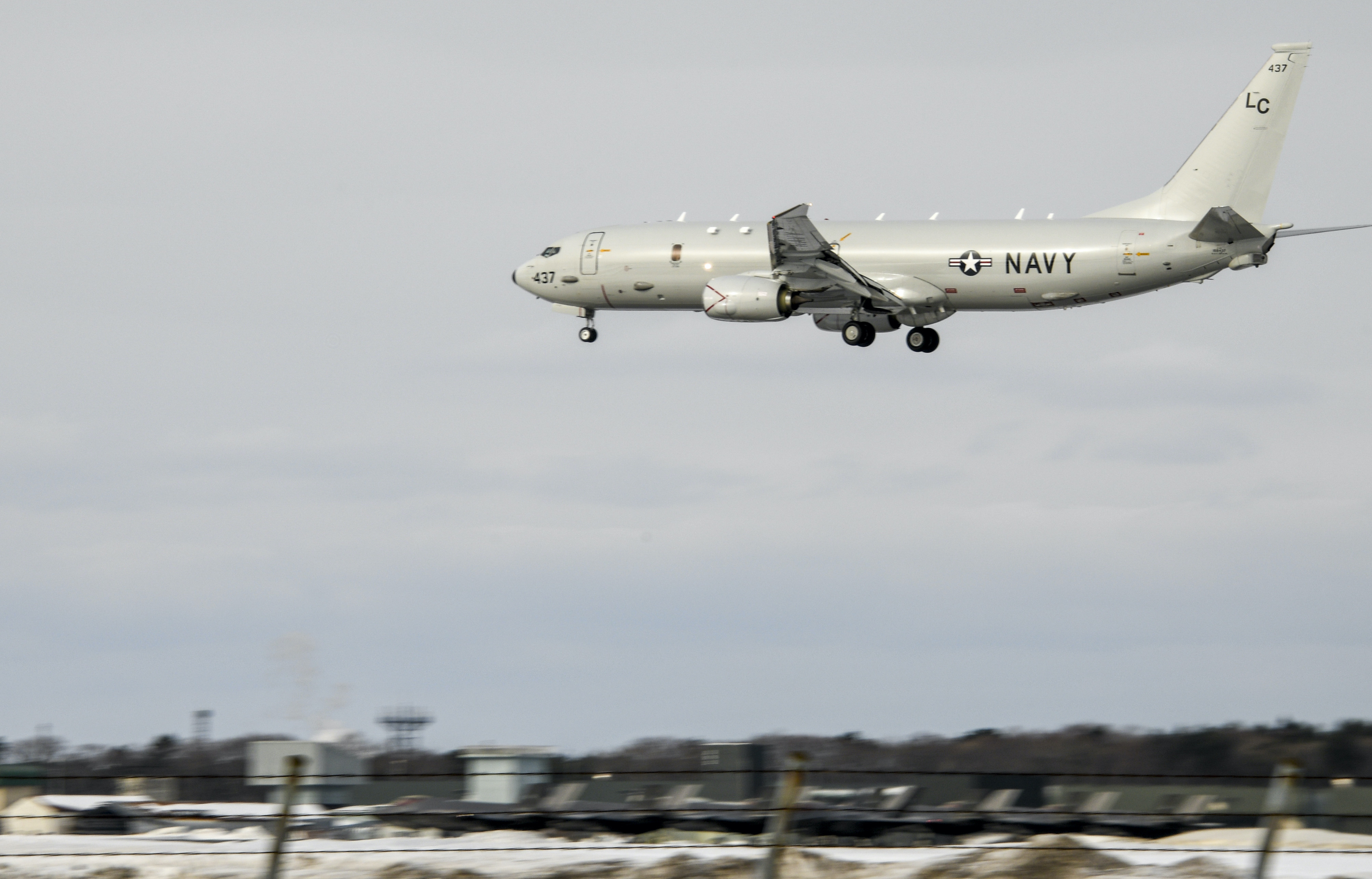
The prototype for the Navy’s unmanned refueling tanker has wrapped up deck handling tests aboard an aircraft carrier off the East Coast.
The service performed tests of the T-1 prototype aboard USS George H.W. Bush (CVN-77) to assess how the aircraft functioned aboard the flight deck in winds of more than 25 knots.
“Once underway, the MQ-25 test asset, known as T-1, completed a series of test points that evaluated the functionality and capabilities of the deck handling system during both day and nighttime operations. Maneuvers included taxiing and parking on the flight deck, connecting to the catapult and clearing the landing area. Data was collected related to deck motion and wind over deck impacts to controllability and the propulsion system,” Naval Air Systems Command said in a news release this week.
The Navy worked with both Boeing, which built the prototype the service is using for its MQ-25A Stingray program, and Lockheed Martin on the testing to better understand how the aircraft could be controlled on the flight deck and assimilate onto the carrier.
During testing, those handling the prototype aboard the carrier integrated with the Navy’s taxi directors and utilized the Deck Control Device built by Boeing, NAVAIR said.
Prior to assessing how the prototype functioned on the deck of the carrier during the recent at-sea testing phase, the Navy and contractors placed a control station in George H.W. Bush’s Unmanned Aviation Warfare Center while the ship was pier side.
“During the in-port portion of the UCAD, Lockheed Martin installed the prototype MD-5 ground control station in the Unmanned Aviation Warfare Center (UAWC), the CVN-based control room,” NAVAIR said. “The team specifically demonstrated the functionality of the GCS to the MQ-25 fleet integration team, giving them the opportunity to assess design constraints driven by shipboard installation and capture feedback on human system interfaces.”
The service and contractors only tested deck handling of the prototype, not how it flew on or off the carrier, but did use a King Air plane to test out the Joint Precision Landing System (JPALS).
“The team also coordinated the first Joint Precision Landing System (JPALS) surrogate flight with a King Air,” NAVAIR said. “Ship motion data collected during these first representative hardware and software approaches will be extremely valuable in refining the software.”
The MQ-25 will perform the aerial refueling mission for the Navy and free up some of the F/A-18F Super Hornets that do buddy refueling for the fleet. The program is expected to reach initial operational capability in 2025 and its development comes as the Navy seeks to operate aircraft from carriers at longer ranges in regions like the Indo-Pacific.
Boeing originally built the T-1 prototype for the Unmanned Carrier Launched Airborne Surveillance and Strike (UCLASS) program that was later altered to be a tanker. The prototype has already performed overland tests refueling an E-2D Advanced Hawkeye, an F/A-18F Super Hornet and an F-35C Lightning II Joint Strike Fighter.
Rear Adm. Andrew Loiselle, who leads the chief of naval operation’s air warfare directorate (OPNAV N98), told USNI News in an interview earlier this month that the deck handling test aboard Bush would help the Navy get a better sense of how the prototype’s engine functions in certain wind conditions.
“We’re making some great progress with T-1 and reducing risks for the program. And so the primary goal of this is to look at [performance] on the flight deck, in relevant flight deck wind conditions,” Loiselle said at the time. “When you look at the intake on that thing up on the top of the aircraft, I’m very interested to know how that thing’s going to behave from an engine perspective with 25 plus knots of wind from all directions.”





